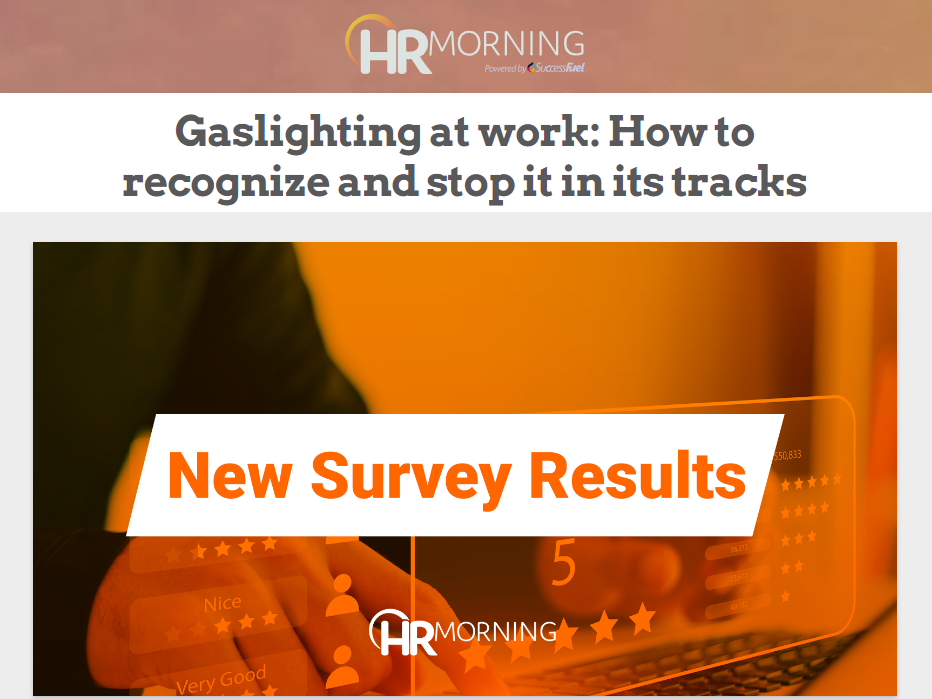HR Morning spent time with Crawford Thomas Recruiting, co-founder, William Stonehouse III in this recent article regarding Gaslighting in the workplace.
Full the full article, visit HR Morning and the Original Article here.

A few days ago, Merriam-Webster announced their “word of the year” for 2022: gaslighting. The word had a 1740% search increase throughout the year.
Merriam-Webster defines gaslighting as “the act or practice of grossly misleading someone, especially for one’s own advantage.”
The word gaslight originates from a 1938 play and 1944 movie of the same name. In it, a man convinces his wife she cannot trust her reality. However, gaslighting doesn’t just happen in romantic relationships. Manipulation and gaslighting can happen in the workplace and lead to a toxic work culture that can have detrimental effects on employees and the business.
Recognizing gaslighting at work
One of the hardest parts of addressing gaslighting at work is figuring out that it’s happening. Due to the nature of the manipulation, victims of gaslighting may believe the other party is correct and that they can’t trust their own judgment.
However, the word is also often overused, so it’s important to understand the differences between gaslighting and simply lying.
“Gaslighting must make the other party question their own reality and is typically persistent behavior,” says William Stonehouse III, co-founder and president of Crawford Thomas Recruiting. “Gaslighting in the workplace can start as small as a manager strategically excluding an employee from important meetings to present their own work to more obvious belittling like speaking negatively of a person to peers and leadership to make them appear unfit for a raise or promotion.”
Gaslighting at work could look like:
- A supervisor who enjoys flexible scheduling denies a worker’s request for more flexible arrangements, calling it a “ridiculous request” or an impossible thing to allow. When pressed on the issue, the supervisor gets defensive, makes excuses and causes the worker to question their reality.
- A co-worker fails to communicate clearly about expectations on a project and then “misremembers” what was agreed upon by team members. When challenged or proven wrong, the co-worker gets defensive, blames team members for submitting “subpar” work and makes them question their value to the team.
How it can affect the workplace
Manipulation like gaslighting can quickly turn the workplace into a toxic and hostile environment. Employees may feel like they need to walk on eggshells and watch what they say. Beyond that, though, it can lead to a decrease in productivity and morale. If they are being gaslit about their work, they could start believing that they’re not good at their job or not qualified, leading to imposter syndrome and a lack of confidence.
“If an employee is made to believe they are crazy or not good enough, they might lose excitement in their work over time and develop resentment toward the employer,” says Stonehouse. “In more severe cases, gaslighting can creep into a person’s private life, impacting their mental health and well-being.”

What HR can do?
More on this subject can be viewed here.
About Crawford Thomas Recruiting:
Crawford Thomas is a team of leading HR recruiters. We not only fill staffing needs, we partner with organizations to find out how their recruiting needs tie into their business objectives. Through this, we are able to meet your staffing needs in a way that achieves organizational success.
Start securing top talent by visiting our page for employers today.

